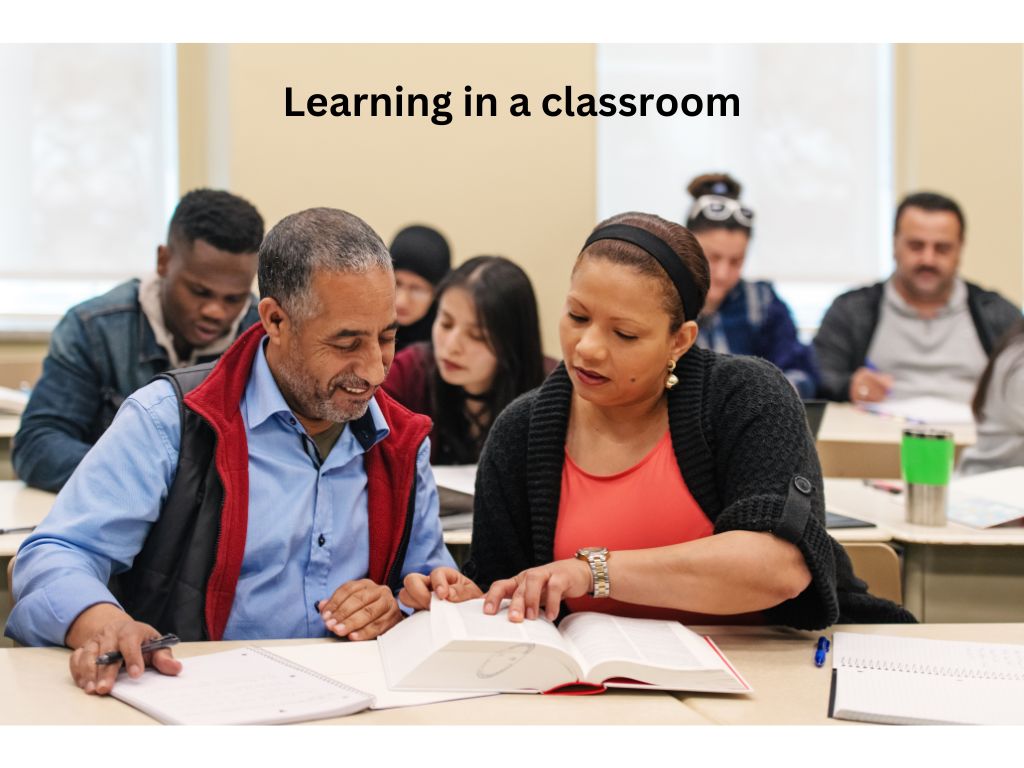Online ESL classes are booming, mainly because of the tech landscape we’re navigating. They’ve opened up a whole new world for adult learners who can’t always make it to a physical classroom. With just a decent internet connection and a device, bam, you’re in a class! This convenience has given people the chance to learn English even when they’re tied up with other responsibilities.

In terms of what’s the same, the core teaching remains consistent, whether you’re online or in a physical room. Yet, there are some twists—the online approach often includes lots of interactive tools, like digital whiteboards and language apps, which spice up the learning process. But in-person classes have their perks like real-time interaction and more personal engagement.
Some folks might ask, “So, what really sets online classes apart?” It’s the flexibility, hands down. You can be chillin’ at home, cozy in your pajamas, with a coffee in hand, and still be picking up that English lingo like nobody’s business. This setup is perfect for beginners who might feel anxious about making mistakes in a traditional class. Being in a familiar space can boost confidence.
Now, let’s not ignore the tech side of things. Online learning is ripe with features to support your English journey. We’re talking recorded sessions to revisit tricky grammar, and reward systems built into platforms to keep it fun and engaging. These tools enhance learning while adapting to each student’s pace.
So, if you’re weighing the online option for your ESL journey, consider what fits your lifestyle best. Whether it’s tackling grammar hiccups during lunch or practicing your pronunciation in the evening, online classes offer flexibility without compromising on quality learning.
The Social Dynamics of ESL Learning
When it comes to picking up a new language, interacting with others can really speed up the process. Many students get a buzz from chatting with classmates and teachers, which is why in-person classes seem more appealing at first glance.

However, not everyone thrives in physical settings. Some students experience just as much, if not more, connection through their screens. I’ve seen it with my own eyes—students who’ve never actually met forming strong bonds, sharing laughs and culture, proving that camaraderie isn’t just face-to-face.
It’s about how we use the online platforms to foster interaction. There are these nifty breakout rooms that let small groups discuss topics, mimicking real-life situations. Online boards that keep conversations going, group projects, and live chats—all these tools help create a sense of community.
Sure, online students can feel a bit isolated at times, but that’s where a proactive approach comes in. Setting up regular virtual socials or pairing students for language exchanges can massively amp up engagement and build friendships.
Ultimately, whether a class is online or offline, the goal is the same—creating spaces where students feel supported and motivated to practice their language skills. Encouraging social interaction online takes a bit more creativity, but it’s totally worth it when you see students connecting from all corners of the world.
The Role of Personal Preference in Learning
Personal preference plays a massive role in how students learn best. Every student’s got their own vibe—some thrive on the energy of a buzzing classroom while others need the flexibility online classes offer.

For those who crave face-to-face interaction, in-person classes can be a social haven. They love huddles around a table, tossing ideas, and that instant feedback in a group setting. It’s not just about learning English but also about building a circle and exchanging cultural insights.
Then there are students whose circumstances demand online learning. Whether it’s juggling family duties or dealing with mobility issues, online classes are a lifeline. They allow studying at any hour that fits into life’s hectic schedule, making it possible for everyone to keep moving forward in their language journey.
But here’s the kicker—what works for one, might not float another’s boat. A flexible format, like online classes, might be perfect for those who like to travel but don’t want to skip lessons. It’s great when learning isn’t limited by location and time.
When deciding which is better, students need to think about what suits their personality and lifestyle the best. Whether in a digital classroom or a brick-and-mortar one, motivated students will thrive where they feel comfortable and supported. It’s all about finding that sweet spot where learning feels natural and engaging.
Teaching Perspectives: Navigating Online and Offline Worlds
Teaching ESL, whether online or in-person, offers its own unique thrills and hurdles. From where I stand, getting to interact with students from around the globe while sitting snug at my desk—well, that’s a pretty sweet deal. Online teaching lets me reach learners far beyond my local café, and let’s not forget the beauty of teaching in sweats!
Online setups offer teachers a ton of technological perks. We’re talking digital whiteboards, breakout rooms to split the class into smaller groups, and interactive polls to keep everyone on their toes. Not being tied to a physical space means I can design lessons for diverse needs and access tons of digital resources at the click of a button.
But I’ve got a soft spot for the traditional classroom too. There’s energy there that tech can’t replicate—using the space creatively, like moving around to engage students, or drawing up quick diagrams on a good old whiteboard. These tools bring an immediate, tactile element to lessons that some students find really valuable.
For educators like myself, choosing between these formats is all about what aligns with our teaching style and goals for student engagement. Balancing the personal with the professional, and thinking about what my students need, makes the decision clear every time. When students are excited to be part of the class, whether they’re in the room with you or miles away on a screen, that’s the real win.
Leave comments and questions in the space below.


As someone who’s been out of the classroom for years, the flexibility of online ESL classes seems like a game-changer.
It’s amazing that we can now connect and learn from anywhere, whether it’s during a lunch break or in a different time zone altogether!
I wonder, though, do teachers find it harder to keep up with every student’s progress online compared to in-person classes?
Would love to hear from anyone who’s experienced both!
Hi Benjamin, thanks for your comments. As for your question, I can’t speak for all teachers but I can tell you that many, if not most of the teachers I know don’t like teaching online and prefer in-person classes. As for me, I prefer teaching online, not because I don’t like teaching in-person. I like teaching in-person too. I prefer online because I can do it from home or wherever I am
KBob